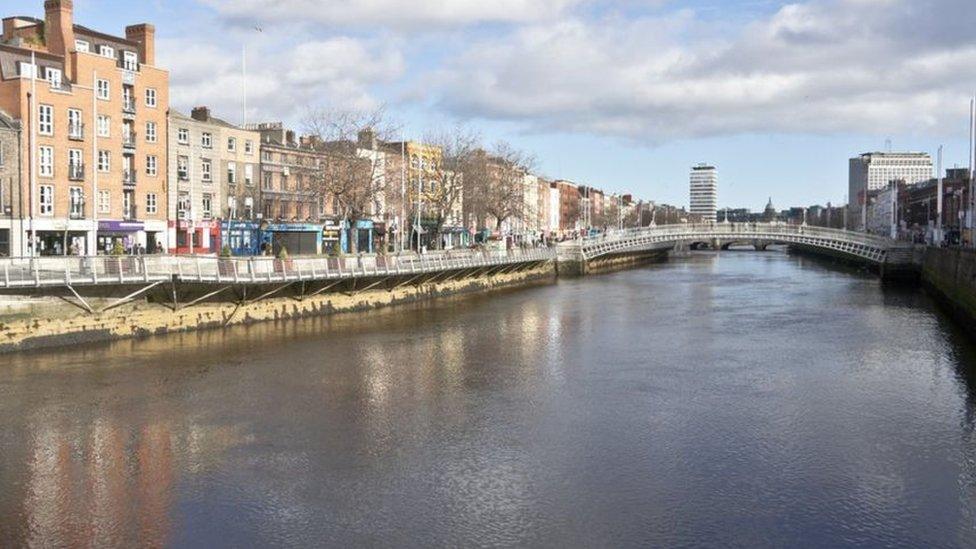Ireland's population grows as economy recovers
- Published

Almost 30 per cent of Ireland's growing population is based in Dublin
More people are moving to Ireland than leaving as the economic recovery continues, official figures suggest.
There has now been net immigration for the fifth year in a row.
Between April 2018 and April 2019 an estimated 88,600 people moved to Ireland while 54,900 left. Between 2010 and 2014 more people left Ireland than moved there.
Almost 30% of the Irish population, approximately 1.4 million people, live in Dublin.
The recession meant there was net emigration in Ireland, before the trend returned to net immigration in 2015.
The return to net immigration is likely to be a direct result of the country's economic recovery.
The Irish economy is still growing strongly and some economists believe it is approaching technical full employment."
During Ireland's economic boom annual net immigration peaked at more than 100,000 in 2007.
Net migration to Northern Ireland has also reached its highest level in 10 years in 2018, according to new figures.
Sustained natural increase
The Central Statistics Office (CSO) said the number of non-Irish nationals living in Ireland increased from 593,600 to 622,700, which is 12.7% of the total population.
Of the non-Irish nationals an estimated 115,000 are from the UK, 340,000 from elsewhere in the EU and 169,000 from elsewhere in the world.
James Hegarty, CSO statistician, said the annual increase brought the population estimate to 4.92 million in April 2019.
"The combined effect of positive net migration and sustained natural increase resulted in population growth of 64,500 (+1.3%) in the year to April 2019."
Mr Hegarty added that all regions showed a population increase in the year to April 2019, ranging from 2,600 people (0.5%) in the mid-west to 25,100 people (1.8%) in Dublin.
- Published22 August 2019
